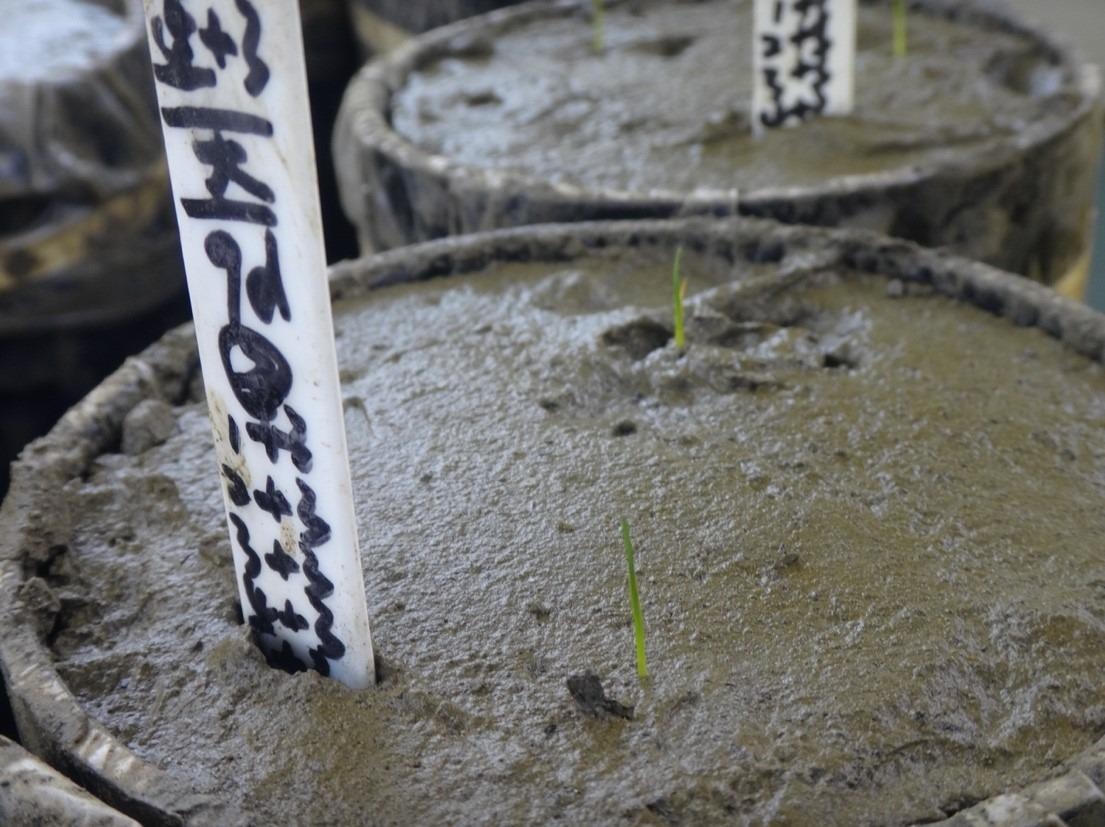By feeding large experimental data sets to a machine learning model, wetland establishment for flood defense can be enabled by manipulating the local conditions, thus overruling intense global change stressors.
 Experiments to understand salt marsh seedling establishment on bare tidal flats. The experiment had so many treatments, that it allowed the development of a machine learning model by Zhan Hu and colleagues. (Image Credit: NIOZ).
Experiments to understand salt marsh seedling establishment on bare tidal flats. The experiment had so many treatments, that it allowed the development of a machine learning model by Zhan Hu and colleagues. (Image Credit: NIOZ).
In a publication in Geophysical Research Letters, this concept was revealed by an international team of researchers from China, the United Kingdom, The Netherlands and Belgium.
Globally, coastal wetlands such as salt marshes and mangroves are gradually recognized as important natural defenses that safeguard coasts. Tidal salt marshes improve flood safety by being ‘wave absorbers’ that guard the dikes behind them, and by being ‘flood fighters’ that reduce the flood depth by controlling the size of breaches when a dike would collapse during severe storms.
The question arises if these wetlands can be established and restored where necessary, now that the level of the sea is rising, and storms are becoming stronger and more common.
The growing vulnerability of coastal wetlands because of climate changes is a global worry, given the many essential services they offer, like carbon storage and hosting unlimited biodiversity.
Although the need of restoring coastal wetlands is widely recognized, little is known about the key processes controlling wetland vegetation establishment.
Zhan Hu, Associate Professor in Marine Science, Sun Yat-Sen University (Chinese coastal city of Zhuhai).
Using Computer Models to Predict Marsh Establishment
Hu is the leading author of this study and headed the international research team comprising physical geographers, engineers and ecologists. “From the large data sets generated in recent field and laboratory experiments, we know that the establishment process of wetland vegetation is complex and depending on a diverse set of factors in its living environment.”
The researchers used machine learning to interpret the gathered data set into predictive models that can estimate marsh establishment under different environmental conditions. “This allowed us to venture out into the unknown future”, says Hu.
Local Conditions More Important Than Global Change
The outcomes of this computer model showed that marsh establishment can be well controlled, regardless of the ongoing global change.
The good news is that controllable local conditions are much more important than uncontrollable climate change stressors. Overall, this provides a positive outlook for future coastal wetland restorations.
Zhan Hu, Associate Professor in Marine Science, Sun Yat-Sen University (Chinese coastal city of Zhuhai).
The use of machine learning sheds some light on the local scale. “It is especially the sediment supply, the local wave height, and shape of the tidal flat in front of the marsh that we need to control to counteract the threats of changing wind climate and rising sea level,” tells Hu.
These findings are important in that they broaden our focus from the dike-protecting marshes, towards managing the whole ecosystem, including the tidal flats fronting the marsh.
Tjeerd Bouma, Ecologist, NIOZ Royal Netherlands Institute for Sea Research and Utrecht University
Worldwide, sediment supply is now reducing in a number of estuaries because of the upstream management of rivers, like constructing hydraulic dams for power generation. The current study proposes that making using dredged material can balance this effect and support marshes. It also reveals that the smart use of basic wave-breaking systems can be employed to expand the marshes.
“The latter was apparently well known by our ancestors,” says Bouma, “as this is exactly what was done by the construction of brushwood dams. So, although we must foremost counter global change, as was discussed in the Glasgow-meeting last week, science-based local management measures along our coasts offer great opportunities to facilitate coastal wetland restoration around the globe, in the face of global change.”
Journal Reference:
Hu, Z., et al. (2021) Mechanistic Modeling of Marsh Seedling Establishment Provides a Positive Outlook for Coastal Wetland Restoration Under Global Climate Change. Geophysical Research Letters. doi.org/10.1029/2021GL095596.